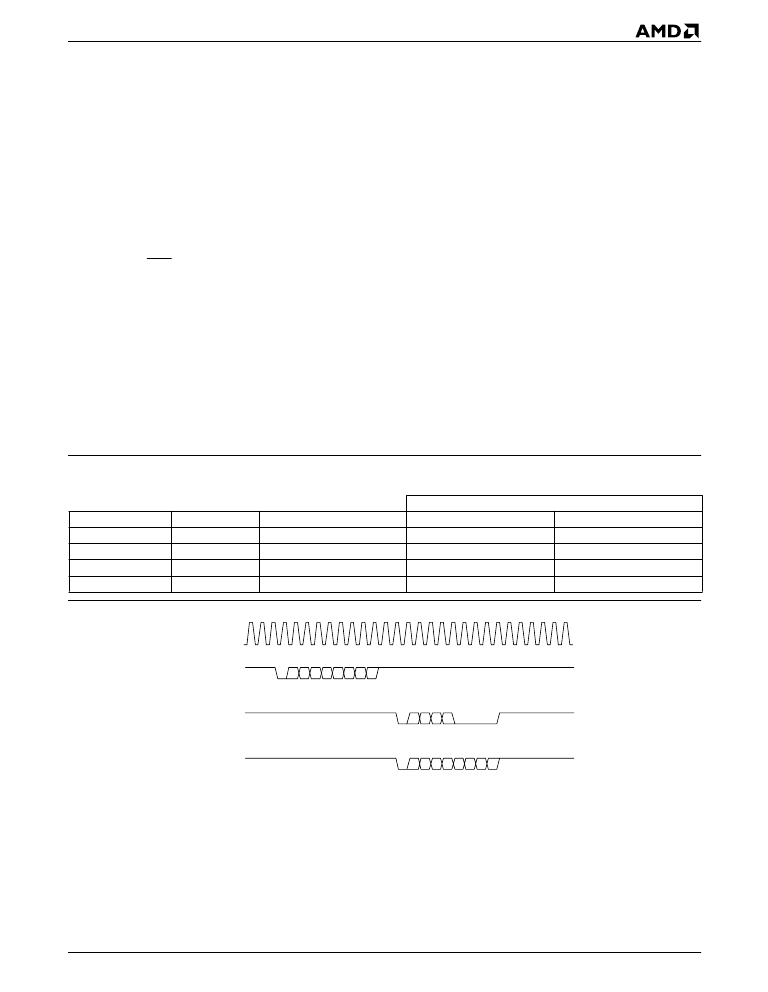- 您現(xiàn)在的位置:買賣IC網(wǎng) > PDF目錄366551 > AM79C985KCW (ADVANCED MICRO DEVICES INC) enhanced Integrated Multiport Repeater Plus (eIMR+⑩) PDF資料下載
參數(shù)資料
| 型號(hào): | AM79C985KCW |
| 廠商: | ADVANCED MICRO DEVICES INC |
| 元件分類: | 網(wǎng)絡(luò)接口 |
| 英文描述: | enhanced Integrated Multiport Repeater Plus (eIMR+⑩) |
| 中文描述: | DATACOM, ETHERNET TRANSCEIVER, PQFP100 |
| 封裝: | PLASTIC, QFP-100 |
| 文件頁(yè)數(shù): | 23/48頁(yè) |
| 文件大?。?/td> | 260K |
| 代理商: | AM79C985KCW |
第1頁(yè)第2頁(yè)第3頁(yè)第4頁(yè)第5頁(yè)第6頁(yè)第7頁(yè)第8頁(yè)第9頁(yè)第10頁(yè)第11頁(yè)第12頁(yè)第13頁(yè)第14頁(yè)第15頁(yè)第16頁(yè)第17頁(yè)第18頁(yè)第19頁(yè)第20頁(yè)第21頁(yè)第22頁(yè)當(dāng)前第23頁(yè)第24頁(yè)第25頁(yè)第26頁(yè)第27頁(yè)第28頁(yè)第29頁(yè)第30頁(yè)第31頁(yè)第32頁(yè)第33頁(yè)第34頁(yè)第35頁(yè)第36頁(yè)第37頁(yè)第38頁(yè)第39頁(yè)第40頁(yè)第41頁(yè)第42頁(yè)第43頁(yè)第44頁(yè)第45頁(yè)第46頁(yè)第47頁(yè)第48頁(yè)

Am79C985
23
P R E L I M I N A R Y
When two eIMR+ devices are connected to one HIMIB
device, the secondary device transmits the status of its
TP ports, then transmits the status of the primary eIMR+
TP ports and AUI port (CRS and CI). Note that the sec-
ondary device does not transmit the status of its AUI
port. At Reset, the secondary device (and single eIMR+
device) internally synchronizes the CRS stream to begin
with the AUI CI bit. SO is the eIMR+ device response to
a Get command.
The pins SI_D and CRS_I are multi-purpose pins. Their
primary purpose is management input to the primary
eIMR+ device. They are also used to set the manage-
ment mode of the eIMR+ device. The mode is set on the
rising edge of RST. The settings are shown in Table 4.
Following reset, the eIMR+ devices retain their manage-
ment designations. However, CRS_I and SI_D return to
their management port functions.
Command/Response Timing
Figure 7 shows the command/response timing. At the
end of a GET command, the eIMR+ device waits two
SCLK cycles and then transmits the response on SO.
The secondary eIMR+ device stores the data received
on the SI_D input (from the primary eIMR+ device) in
an internal register. When it has transmitted D3 data, it
appends the received response to the end of the SO
signal.
Following reset, after the eIMR+ devices have been as-
signed their primary and secondary designation, SO
and SI_D return to their management-port functions.
Port Activity
In addition to providing a means for receiving com-
mands and sending data in response to those com-
mands, the management port includes a CRS signal
that transmits the state of the eIMR+ device’s internal
carrier-sense signals.
When two eIMR+ devices are connected to one
Am79C987 HIMIB device (as shown in the System
Applications section), CRS_I of the secondary device
receives the following signals from the primary device:
the carrier-sense signals of the AUI port, the CI-bit sta-
tus of the AUI port, and the carrier-sense signals of the
TP ports. The secondary device transmits the status of
the AUI port (CRS and CI) for the primary device, the
status of its own TP ports (TP0-TP3), and then the sta-
tus of the primary device’s TP ports (TP4-TP7). The
status of the AUI port of the secondary device is not
retransmitted (see Figure 8).
Figure 7. Management Get Command/Response
Table 4. eIMR+ Device Management Designations
Two eIMR+ Devices
CRS_I
0
0
1
1
SI_D
0
1
0
1
Single eIMR+ Device
Primary eIMR+ Device
√
Secondary eIMR+ Device
√
√
√
Note:
For SO on the Primary device, D[3:0] corresponds to TP[7:4].
ST D0 D1 D2 D3 D4 D5 D6 D7
ST D0 D1 D2 D3
SCLK
SI
SO
Primary eIMR+ Device or
Single eIMR+ Device
ST D0 D1 D2 D3 D4 D5 D6 D7
SO
Secondary eIMR+ Device
20651B-12
相關(guān)PDF資料 |
PDF描述 |
|---|---|
| AM79C987 | Hardware Implemented Management Information Base (HIMIB) Device |
| AM79C987JC | Hardware Implemented Management Information Base (HIMIB) Device |
| AM79C987JCB | Hardware Implemented Management Information Base (HIMIB) Device |
| AM79C988A | IC,Motor Controller,CMOS,SOP,8PIN |
| AM79C988 | Quad Integrated Ethernet Transceiver (QuIET⑩) |
相關(guān)代理商/技術(shù)參數(shù) |
參數(shù)描述 |
|---|---|
| AM79C985WW WAF | 制造商:Advanced Micro Devices 功能描述: |
| AM79C987 | 制造商:AMD 制造商全稱:Advanced Micro Devices 功能描述:Hardware Implemented Management Information Base (HIMIB) Device |
| AM79C987JC | 制造商:AMD 制造商全稱:Advanced Micro Devices 功能描述:Hardware Implemented Management Information Base (HIMIB) Device |
| AM79C987JCB | 制造商:AMD 制造商全稱:Advanced Micro Devices 功能描述:Hardware Implemented Management Information Base (HIMIB) Device |
發(fā)布緊急采購(gòu),3分鐘左右您將得到回復(fù)。